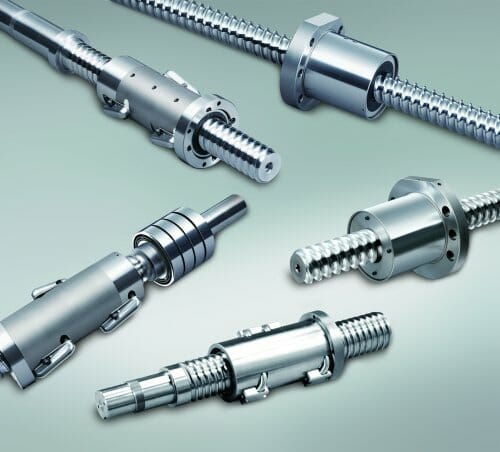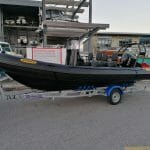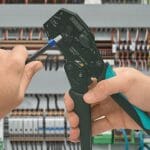Constructing buildings and bridges in earthquake-prone regions usually necessitates the use of damping techniques. While solutions such as mass spring damping or hydraulic systems provide the traditional way of absorbing dynamic compressive and tensile forces, an alternative is to use vibration dampers featuring high-load ball screws. The use of ball screws saves space and permits easy adaptation to individual requirements.
Usually deployed in industrial machinery, high-load ball screws apply a strong, uniform pressing force to servo presses and plastic injection moulding machines. For such applications, NSK has developed the broad-ranging HTF series. HTF ball screws convert rotary motion into linear motion and vice versa, offering high precision even when subject to very strong forces and high loads.
These drive components are also suitable for use as vibration dampers and absorbers in buildings and bridges, a development that originated in Japan, where the risk of earthquake is high and all structures need to be designed and protected accordingly.
Today, several suppliers of earthquake protection systems offer solutions of this type based on NSK ball screws. The technique uses a high-load ball-screw drive with a rotating counterweight on the nut. This ball screw (integrated into a structural unit) then takes its place between two load-bearing elements of the building, often in the basement.
Linear movement of the ball screw ensues when one of the two load-bearing elements is set in motion, usually when a high dynamic load occurs for a short period of time, such as during an earthquake or when a heavy train crosses a railway bridge. This linear movement converts into rotary motion of the damping weight. When the direction of rotation changes, the oscillations superimpose each other with opposite amplitudes. The result is effective damping of the shock load, whereby both dynamic compression and tensile forces are absorbed.
Of particular note, the load capacity of the ball-screw drive can be adapted to individual requirements in a user-friendly manner. Typically, the units used are those which convert a small axial stroke into a high number of revolutions of the nut and thus achieve the required damping effect.
Compared with the mass spring systems and hydraulic dampers used to date, ball-screw systems in this application provide the advantage, among other things, of requiring very little installation space. Easy integration into the surrounding structure is a further advantage.
The concept is highly efficient, as can be shown when comparing figures: a damping system based on a ball-screw drive and rotating counterweight with a total weight of around two tonnes achieves a damping effect for which an additional 2,000 to 3,000 tonnes of weight would be required for a mass spring system. Another benefit is that the system performs its task reliably even under harsh environmental conditions, while maintenance effort is minimal as only mechanical and robust components are used, without need for an electric drive.
Applications for these simple yet highly effective vibration damping solutions include most typical structural engineering and critical piping systems, such as those found in power plants, chemical plants and refineries. The compact units are ideal for both new building construction and seismic retrofitting and strengthening of existing structures. During the design phase, NSK engineers provide support to manufacturers of damping systems for earthquake protection.







